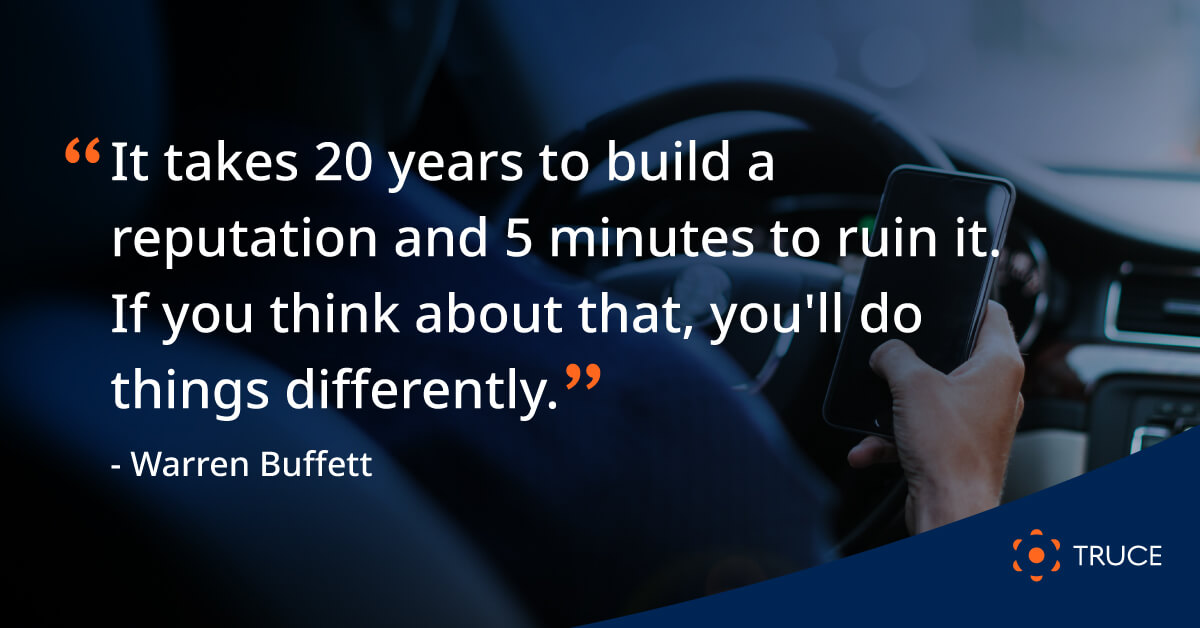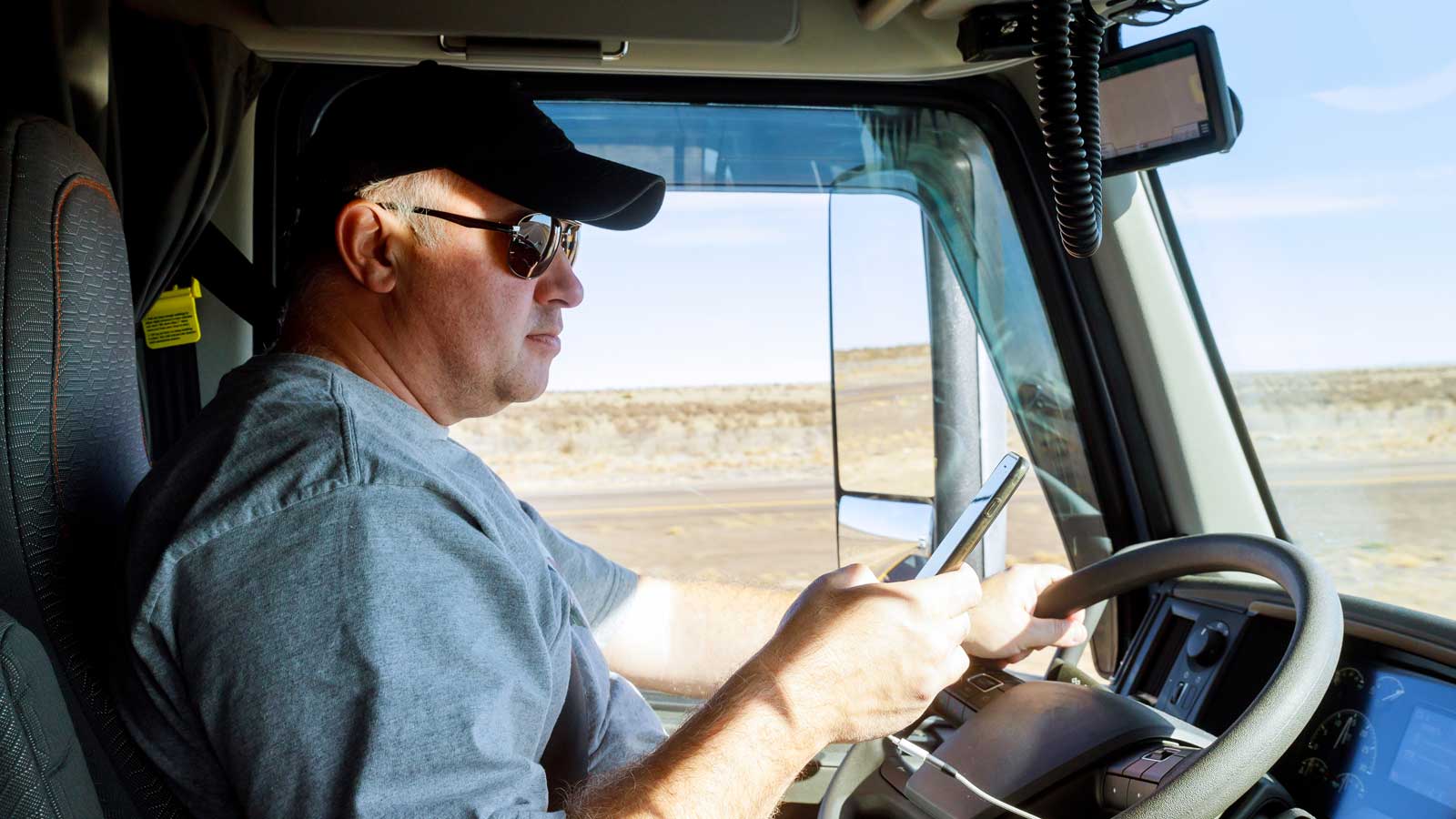The deskless workforce spends a great deal of time behind the wheel. During that time, they balance a slew of driver distractions. They must finish jobs, complete deliveries or arrive at job sites in a timely manner. Meanwhile, they’re in regular contact with their managers and teams.
That means drivers rely heavily on their mobile devices – both while navigating and when they reach their destinations. From an operations standpoint, electronic devices are necessary, but employees need to use them safely when driving.
Falling prey to digital distraction is all too easy. If employees allow their eyes off the road for just 5 seconds, they could have driven the length of a football field. One distracted driver can impact the business far beyond obvious consequences (fatal crashes) when a distracted driving accident occurs:
Financial Risks of Fleet Distracted Driving to Your Business
The business costs from fleet distracted driving accidents span multiple categories:
- Vehicle repairs or permanent replacements. This depends on your insurance coverage and, if a vehicle is a total loss, the difference between the value of your vehicle and the price of a new one.
- Temporary replacement vehicles. You’ll need to rent a vehicle until repairs are made unless you choose the next category of costs.
- Lost business because no vehicle is available. Without the right number of vehicles, you may miss business opportunities.
- Lost business because your employee is injured. Employees are your most valuable asset. If someone is not able to work, then they can’t make deliveries, perform services, or close sales. Your business suffers until they recover, which could be weeks or months, depending on their injuries.
- Insurance premium increases. When the accident rate goes up, insurance rates will follow. Some businesses have faced situations where insurance carriers decline continued coverage.
- Nuclear jury verdicts. Juries are now awarding huge sums related to car crashes involving commercial fleets. Looking just at trucking industry verdicts of over $1M, the average size of awards increased by nearly 1,000 percent from 2010 to 2018. These nuclear verdicts can force a medium sized firm into bankruptcy.
Distracted Drivers Damage Your Company’s Reputation
Odds are that a company’s fleet is adorned with its logo. It’s an extra way to build your company’s brand on the road. However, it has a big potential downside when vehicles violate distracted driving laws or cause a motor vehicle crash. (Currently, 48 states ban texting while driving, and 30 prohibit all drivers from using handheld cell phones while driving.)
If your employee is involved in a distracted driving incident, and your employee is at fault, the story can spread quickly via social media. In a serious accident, news outlets might report on it, hurting your company’s reputation and brand.
As Warren Buffett said, “It takes 20 years to build a reputation and five minutes to ruin it.” While he might not have been talking specifically about distracted driving, his words ring true. In the case of a public enterprise distracted driving accident all it takes is 5 seconds, not even 5 minutes.

How to Prevent Fleet Distracted Driving Proactively
A strict mobile device policy goes a long way, but it’s not always enough. How can you enforce a company distracted driving policy at scale?
To reduce the risks of distracted driving, many companies have tried a combination of distracted driving technology. Some use dash cams to record everything a driver does. Others use telematics to record detailed data on vehicle movements.
While useful, these technologies are essentially reactive, giving a management team something to look at after an accident. The easiest way to prevent distracted driving is with a distracted driving solution that reduces risk before drivers even start their engines.
Smarter Commercial Distracted Driving Software
Today’s Contextual Mobility Management (CMM) distracted driving software is context aware. It can sense where an employee is and what’s going on around them, then enable/disable mobile apps and functions.
For example, the software can prevent a driver from reading a text on the road but allow it once they are on a job site. Or, they can access GPS and receive call notifications from managers so they can pull over and take a call. CMM intercepts digital distractions and proactively prevents distracted driving.
Parameters of what employees can access (and when) depends on your company’s mobile device policy. You define which apps are important for work and which should be suppressed, and that can shift as the employee changes environments. The software can detect motion, vibration, time of day/schedules, proximity to hazards, geolocation, IoT sensors, etc.
Other solutions “brick a phone” while employees drive, but that disables all mobile usage including hands-free features. Employers should not have to disable apps that are critical to complete jobs and hinder employee’s productivity. Contextual Mobility Management (CMM) accounts for a dynamic work day and supports employees across their duties. Better yet, it keeps them safe.
Curb the Dangers of Fleet Distracted Driving
Distracted driving is a pervasive problem for individuals and businesses, and the risks go beyond just the financial. The National Highway Traffic Safety Administration (NHTSA) estimates that 9,560 people were killed in motor vehicle traffic crashes in the first quarter of 2022. In 2020, distracted driving claimed 3,142 lives.
Thankfully, business owners can greatly curb those risks by taking a proactive approach to safe driving. Explore how to lower the risks of distracted driving in “Kick Distracted Driving to the Curb and Promote a Safer and More Productive Workforce.” Or, schedule a demo for TRUCE’s CMM distracted driving solution.

